
Uebelmannia pectinifera subs. horrida Photo by: Valentino Vallicelli
This form is greener than the type with firm, almost lizard-skin textured 'skin' and spines more spreading and doesn't give the comb-like effect of the type.
Origin and Habitat: Brazil, Southern America. (Mountains of Minas Gerais: Serra do Espihaço)
Habitat: The plants are found growing in dry savanna and rocky areas in rock cracks or in pockets or small flat areas of organic leaf mould and sand found among rocks at about 1000m altitude. It is threatened by habitat loss.Uebelmannia pectiniferaSN|14312]]SN|14312]]a and its subspecies are more common in collections than they are in habitat.
Synonyms:
See all synonyms of Uebelmannia pectinifera
Common Names include:
PORTUGUESE (Português): Quiabo-da-lapa
Description: Uebelmannia pectiniferaSN|14312]]SN|14312]] ssp. horrida is a solitary cactus 50- 100 cm tall.
Stem: Up to 18 cm wide, although usually globular or slightly elongated in cultivation, it is reported to grow to as much as 100 cm tall. It is greener than the type reddish-green to brownish-green, with off-white scales. (In cultivation the colour of the plants depends on sun exposure, the plants grown in shadow are green with white stripes, while the ones in full sun take on a purple colour)
Ribs: 23 to 40, acute, vertical and prominent.
Areoles: Set closely and nearly confluent to form an almost continuous grey to brownish felt-like line down the ribs' sides.
Central spines: Dark brown/grey, 1 to 4, up to 1.5(-2) cm long; the spines are close set, neatly arranged, straight, often interlacing, but are
Radial spines: Absent.
Flowers: Diurnal, funnel-shaped greenish yellow. They are 15 mm long, 12 mm in diameter.
Blooming season: Flowers come sporadically from Early spring to Late Summer.
Fruit: pear shaped to cylindrical violet-red 1,5-2,5 cm long.
Remarks: The Uebelmannia pectiniferaSN|14312]]SN|14312]] ssp. horrida and all the other plants belonging to the Uebelmannia pectiniferaSN|14312]]SN|14312]] complex are very variable in habitat, it has three recognized subspecies, but a multitude of different forms exist, where each form is linked to others by populations of plants with intermediate characteristics.
More...Subspecies, varieties, forms and cultivars of plants belonging to the Uebelmannia pectinifera complex
 Uebelmannia pectinifera Buining: (ssp. pectinifera) It has about 18 ribs and slowly grow up to 50 cm in height. Origin: It comes from the mountains in the higher part of the areal.
Uebelmannia pectinifera Buining: (ssp. pectinifera) It has about 18 ribs and slowly grow up to 50 cm in height. Origin: It comes from the mountains in the higher part of the areal. Uebelmannia pectinifera var. crebispina n.n.: Barao de Quacuy, Minas Gerais, Brazil.
Uebelmannia pectinifera var. crebispina n.n.: Barao de Quacuy, Minas Gerais, Brazil. Uebelmannia pectinifera var. eriocactoides Řepka, Krajča & V.Toman: The seedlings closely resemble to juvenile plants of Eriocactus leninghausii, hence the name.
Uebelmannia pectinifera var. eriocactoides Řepka, Krajča & V.Toman: The seedlings closely resemble to juvenile plants of Eriocactus leninghausii, hence the name. Uebelmannia pectinifera subs. flavispina (Buining & Bredero) P.J.Braun & Esteves: It has up to 29 ribs with amber yellow spines, and can grow about 35 cm tall. Origin: west of Diamantina.
Uebelmannia pectinifera subs. flavispina (Buining & Bredero) P.J.Braun & Esteves: It has up to 29 ribs with amber yellow spines, and can grow about 35 cm tall. Origin: west of Diamantina. Uebelmannia pectinifera subs. flavispina var. longispina n.n.: like subsp. flavispina, but spines longer and thicker. Distribution: Guinda, Minas Gerais, Brazil.
Uebelmannia pectinifera subs. flavispina var. longispina n.n.: like subsp. flavispina, but spines longer and thicker. Distribution: Guinda, Minas Gerais, Brazil. Uebelmannia pectinifera subs. horrida (P.J.Braun) P.J.Braun & Esteves: Stem with more than 23 ribs (up to 40) it is the taller of the three and can reach 1 m of height. Origin: Serra do Espihaço.
Uebelmannia pectinifera subs. horrida (P.J.Braun) P.J.Braun & Esteves: Stem with more than 23 ribs (up to 40) it is the taller of the three and can reach 1 m of height. Origin: Serra do Espihaço. Uebelmannia pectinifera var. multicostata Buining & Bredero: has 20 or more ribs. Distribution: 10 km E of Mendanha towards the Rio Jequitinhonha, Minas Gerais, Brazil.
Uebelmannia pectinifera var. multicostata Buining & Bredero: has 20 or more ribs. Distribution: 10 km E of Mendanha towards the Rio Jequitinhonha, Minas Gerais, Brazil. Uebelmannia pectinifera var. pseudopectinifera Buining: has smaller and greener stems, with separate (not confluent) areoles without brush-like spines. Distribution: Diamantina, Minas Gerais, Brazil.
Uebelmannia pectinifera var. pseudopectinifera Buining: has smaller and greener stems, with separate (not confluent) areoles without brush-like spines. Distribution: Diamantina, Minas Gerais, Brazil. Uebelmannia pectinifera f. variegata hort.
Uebelmannia pectinifera f. variegata hort.
Bibliography: Major references and further lectures
1) Edward Anderson “The Cactus family” Timber Press, Incorporated, 2001
2) James Cullen, Sabina G. Knees, H. Suzanne Cubey "The European Garden Flora Flowering Plants: A Manual for the Identification of Plants Cultivated in Europe, Both Out-of-Doors and Under Glass" Cambridge University Press, 11/Aug/2011
3) David R Hunt; Nigel P Taylor; Graham Charles; International Cactaceae Systematics Group. "The New Cactus Lexicon" dh books, 2006
4) Machado, M., Taylor, N.P. & Braun, P. 2013. Uebelmannia pectinifera. In: IUCN 2013. "IUCN Red List of Threatened Species." Version 2013.2. <www.iucnredlist.org>. Downloaded on 08 January 2014.
More...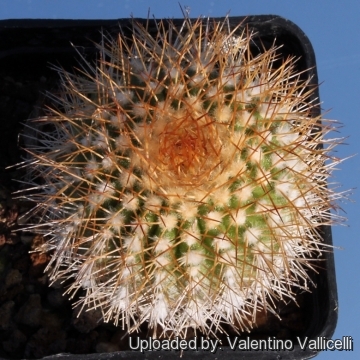 Uebelmannia pectinifera subs. horrida Photo by: Valentino Vallicelli
Uebelmannia pectinifera subs. horrida Photo by: Valentino Vallicelli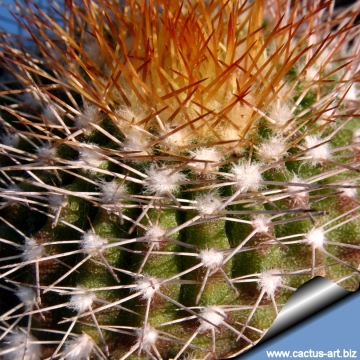 Uebelmannia pectinifera subs. horrida Photo by: Cactus Art
Uebelmannia pectinifera subs. horrida Photo by: Cactus Art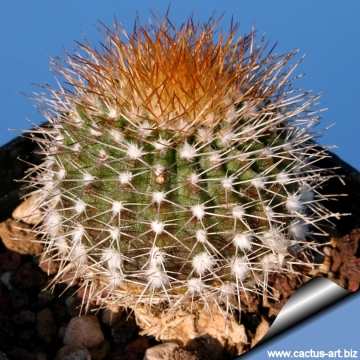 Uebelmannia pectinifera subs. horrida Photo by: Cactus Art
Uebelmannia pectinifera subs. horrida Photo by: Cactus Art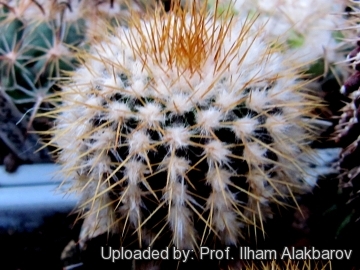 Uebelmannia pectinifera subs. horrida Photo by: Prof. Ilham Alakbarov
Uebelmannia pectinifera subs. horrida Photo by: Prof. Ilham Alakbarov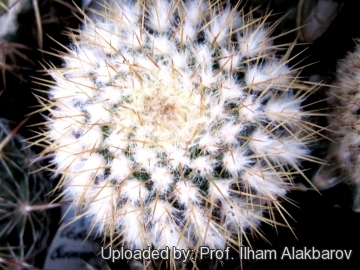 Uebelmannia pectinifera subs. horrida Photo by: Prof. Ilham Alakbarov
Uebelmannia pectinifera subs. horrida Photo by: Prof. Ilham AlakbarovSend a photo of this plant.The gallery now contains thousands of pictures, however it is possible to do even more. We are, of course, seeking photos of species not yet shown in the gallery but not only that, we are also looking for better pictures than those already present.
Read More... Cultivation and Propagation: This tropical cactus loves warm moist, humid conditions and mist spraying is a must in summer. Water regularly during the growing season and use a very draining mineral potting substrate. At the onset of winter, do not water. Uebelmannias need heat all year round and extra winter heat, minimum 10C is best. Avoid any frost. Keep cool in summer. This plant prove to be root prone if kept too cold in winter. To help stop this, a good deep collar of pumice or lava grit is an excellent idea. It prefers a position in full sun, and possibly afternoon shade in summer. If you can place it so that this occurs, the plant will be much happier.
Propagation: Seeds, but plants are often grafted, making them easier to grow, particularly through the winter. If possible using a rootstock that is more hardy than the Uebelmannia is ideal.
More...















